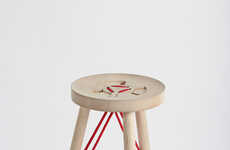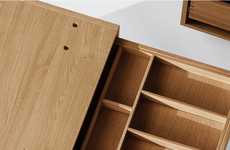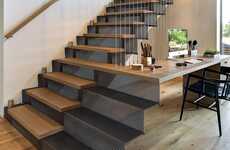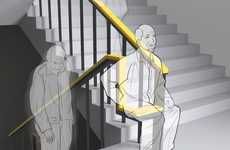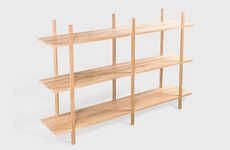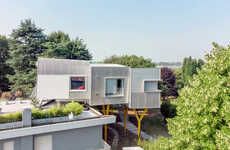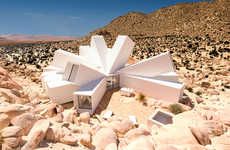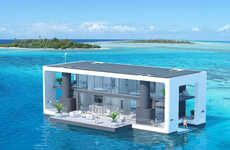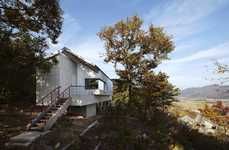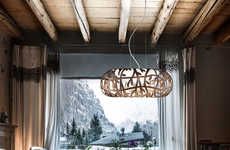
Rafael Iglesia's Cantilevered Staircase is Held in Place by Pressure
Joey Haar — August 2, 2017 — Art & Design
References: archdaily
Though it might sound especially unsafe for a staircase, Rafael Iglesia's clever, cantilevered design is completely structurally sound. Nonetheless, it will likely still raise some eyebrows before people walk up it, as the staircase is built without any fixings whatsoever. That means the entire staircase has no nails, screws, glue, or any other sort of binding tool or material.
Iglesia's design stays in place through pressure and friction alone. To create the staircase, he designed a system of interlocking wood panels that would stay in place if enough pressure was exerted on them. In order to achieve this pressure, Rafael Iglesia and his team firmly inserted wooden wedges in the top and bottom of the staircase structure. Thus, once the extraneous supports were removed, the structure stayed standing.
Iglesia's design stays in place through pressure and friction alone. To create the staircase, he designed a system of interlocking wood panels that would stay in place if enough pressure was exerted on them. In order to achieve this pressure, Rafael Iglesia and his team firmly inserted wooden wedges in the top and bottom of the staircase structure. Thus, once the extraneous supports were removed, the structure stayed standing.
Trend Themes
1. Unfixed Staircase Design - The development of unfixed staircase designs that rely on pressure and friction alone presents opportunities for innovative and flexible architectural solutions.
2. Interlocking Wood Panels - The use of interlocking wood panels as a structural element opens new possibilities for eco-friendly and sustainable construction methods.
3. Pressure-driven Structural Support - The exploration of pressure as a primary means of structural support offers disruptive innovation potential in various engineering and architectural applications.
Industry Implications
1. Architecture and Construction - The introduction of unfixed staircase designs can revolutionize the way architects and construction professionals approach building structures, providing greater flexibility and design possibilities.
2. Woodworking and Carpentry - The incorporation of interlocking wood panels as a construction technique creates opportunities for woodworking and carpentry professionals to develop unique and sustainable products.
3. Engineering and Structural Design - The concept of pressure-driven structural support challenges conventional engineering methods, inspiring engineers and designers to explore innovative and efficient solutions.
2.4
Score
Popularity
Activity
Freshness


